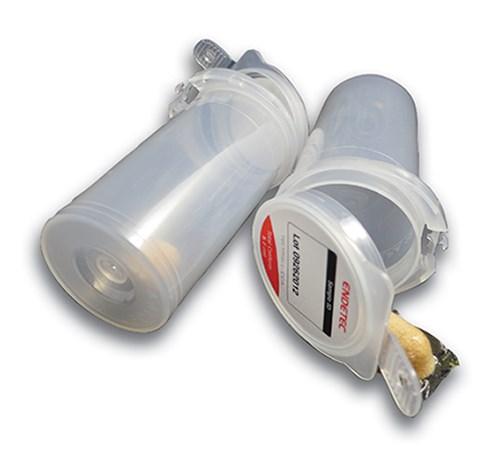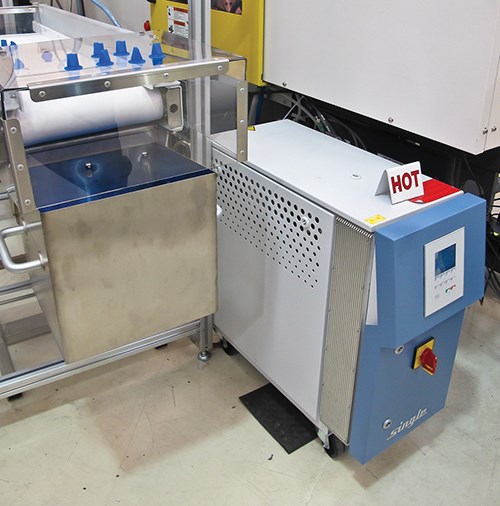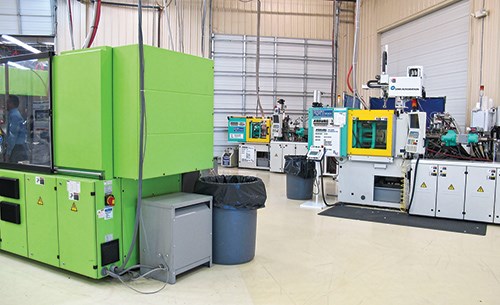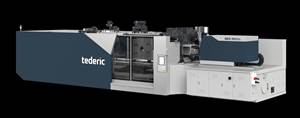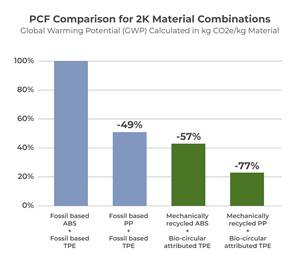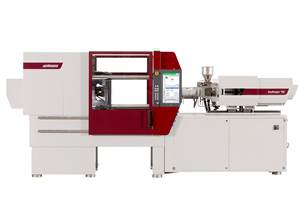Moldmaker Explores New LSR Molding Technologies
Can liquid silicone rubber (LSR ) be overmolded onto polypropylene?
Can liquid silicone rubber (LSR ) be overmolded onto polypropylene? Is there a cleaner and more reliable way to heat LSR injection molds? Affirmative answers to both questions were revealed by Roembke Mfg. & Design, Inc., Ossian, Ind., at a recent open house to celebrate its 35th anniversary and to showcase its capabilities as a leading LSR moldmaker. The company, led by founder and CEO John Roembke and president Greg Roembke, demonstrated its pursuit of innovation with two new projects: 1) overmolding LSR onto PP; and 2) molding with pressurized hot water instead of oil or electric cartridge heaters.
The event also included a technical presentation by Engel Machinery North America, York, Pa., on extending its novel “Xmelt” expansion molding process from thermoplastics to LSR. Roembke helped Engel document the tighter shot-to-shot consistency of this process on an Engel press in Roembke’s shop equipped with X-melt software—data that were presented in a feature article in last month’s issue of Plastics Technology.
Roembke supports LSR tooling and process R&D with its unusually large (for a moldmaker) stable of LSR injection presses: five of its own (30 to 200 tons) from Engel and Arburg Inc., Newington, Conn; as well as two on temporary consignment—a Sodick Plustech two-stage screw/plunger V-line machine from Plustech Inc., Schumburg, Ill.; and an all-electric Fanuc Robotshot from Milacron Inc., Batavia, Ohio.
OVERMOLDING LSR ONTO PP
Up to now, LSR has been overmolded mainly onto engineering thermoplastics like nylon and PBT, which can withstand the 300-400 F mold temperatures required to cure LSR. Although new LSR materials have been developed to cure at low temperature with UV light, Roembke and its development partners demonstrated that it can be done with conventional heat curing as well.
Roembke worked with Engel and Endetec, Kingston, Ont. Endetec specializes in water treatment and water-quality analysis. It developed the Tecta automated testing system for E.coli bacteria. An essential part of that system is a plastic vial for water samples, which has a cap attached by a living hinge and an optically clear LSR plug in the bottom that is a critical element of the UV optical detection system for reading bacterial growth after incubation of the water sample.
The LSR plug is of MS-1003 from Dow Corning Corp., Midland, Mich. The vial is of Marlex HLN-120-01 PP from Chevron Phillips Chemical Co., The Woodlands, Tex. This nucleated, antistatic homopolymer has an HDT of 245 F/118 C at 66 psi. The LSR is cured at 340 F.
Endetec operations manager Doug Wilton says marrying PP and LSR “was a definite challenge.” An earlier candidate for the vial was a flexible nylon, but only PP proved compatible with the test protocol. Wilton believes that successful overmolding is due to “careful tool design that minimizes contact between the hot LSR zone and the PP, as well as careful setting of the various heats so that the material arrived as warm as possible and cure temperature in the tool could be minimized.” The end result was a longer cycle time than would be normal for such a small amount of LSR.
Endetec also designed a leak-free seal between the two materials, which do not bond chemically. This required a mechanical lock for the LSR on both sides of the PP, analagous to a rivet shape.
Prototypes were molded on a 1+1 tool with a cold-runner valve gate for the LSR, using robotic transfer of the part from the PP to the LSR cavity and demolding the finished vial at the same time. A 4+4 production mold is planned when volumes increase. The mold runs in a two-shot, 160-ton Engel victory combi press. Engel enlisted Pro Systems of Churubusco, Ind. to supply custom automation with a six-axis robot to perform post-mold assembly operations, including placing a water-soluble pouch containing bacterial growth media inside each water-test vial.
HEATING LSR MOLDS WITH WATER
Hot oil is an established method of heating molds above the boiling point of water, but risks of contamination of the molding environment are undesirable for medical and other clean-room molding. The alternative is electrical cartridge heaters, which are vulnerable to burnout and to uneven heating (hot spots) along their length. Another “clean” alternative that has been gaining attention is pressurized hot water, which can operate at up to 437 F/225 C.
On its own initiative, Roembke is experimenting with such a unit from Single Temperature Controls, Charlotte, N.C., capable of heating up to 392 F/200 C, which is sufficient for LSR jobs. Roembke is gathering data on the performance of this mold-heating system.
Related Content
Tederic Promotes High Technology, Broader Market Presence
Four cells are running in its booth including a 1,300-ton multimaterial system highlighting its 2K capabilities.
Read MoreMore Sustainable Two-Component Overmolding
Swedish compounders HEXPOL TPE AB and Polykemi AB have collaborated on a 2K sustainable development project for consumer products.
Read MoreFakuma 2023: Wittmann Battenfeld Expands All-Electric Line, Direct-Current Capabilities
Wittmann Battenfeld will introduce the new EcoPower B8X injection molding machine line and show direct current as an energy source for a concept machine that will power its own robot.
Read MoreCompact Solution for Two-Component Molding
Zahoransky’s new internal mold handling technology foregoes the time, space and money required for core-back, rotary table or index plate technologies for 2K molding.
Read MoreRead Next
People 4.0 – How to Get Buy-In from Your Staff for Industry 4.0 Systems
Implementing a production monitoring system as the foundation of a ‘smart factory’ is about integrating people with new technology as much as it is about integrating machines and computers. Here are tips from a company that has gone through the process.
Read MoreBeyond Prototypes: 8 Ways the Plastics Industry Is Using 3D Printing
Plastics processors are finding applications for 3D printing around the plant and across the supply chain. Here are 8 examples to look for at NPE2024.
Read More


